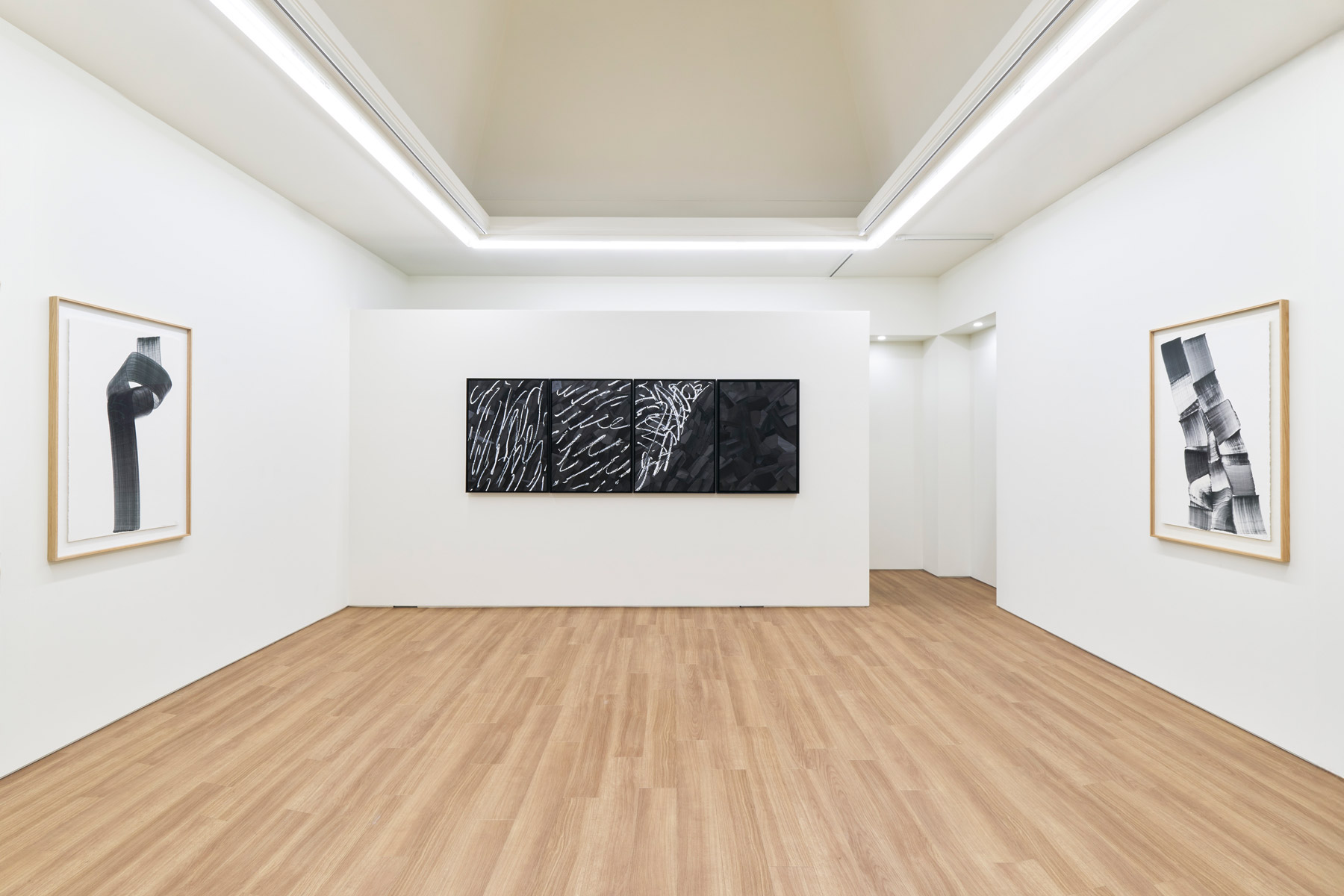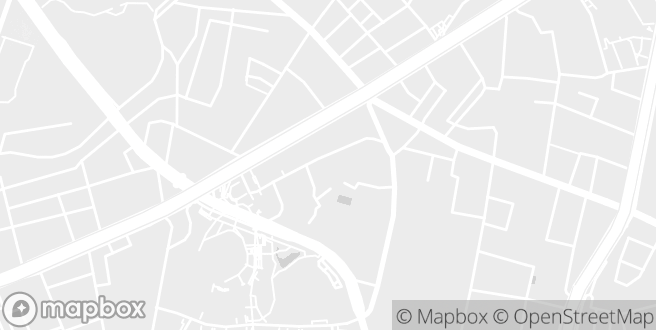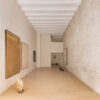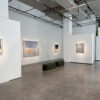Lee Bae’s exhibition at Perrotin Tokyo presents a new series of sculptures titled Brushstrokes, works made of bronze inspired by brushstrokes of charcoal ink. Once weightless and ephemeral, these forms have become three-dimensional shapes that are dense, twisted, almost organic.
We immediately see that Lee Bae has opened up the space: some works are placed on the ground, others thrust toward the walls, and one of them is suspended from the ceiling, spreading in columns, knots, and arabesques through the air, as if the arm’s movement, immobilized by metal, still continued to extend in all directions. In this multiplication of angles and perspectives, the artwork is directly materialized in three dimensions. The borders tremble, as the painting becomes a sculpture. The techniques are varied and perfectly controlled, and the artistic gesture is especially fertile. Are these vertebrae? A framework or the shelves of a library? The skeleton of a strange creature?
In the luminous space of the gallery, these sculptures dialogue with the void surrounding them; they seem to rise, twist, or tilt depending on how viewers position themselves. We are free to see these sculptures as walls, ribbons, or books. Facing them, we experience a contradiction: the density of the metal and the lightness of the gesture, the fixedness of the form and the mobility of our perception. The exhibition acts as a magnetic field: it attracts, absorbs, and reflects the viewer’s body in a slow, almost meditative oscillation. The black shapes occupy the space like signs, both totemic and fragile; they do not say anything, but establish a presence.

In another room, a video is projected onto a screen. It was filmed in Korea and shows a performance in a field. It is the time when the rice paddy is prepared before transplanting the seedlings. We see a man—Lee Bae himself—in blue pants and a white shirt, kneeling in the mud. Then he begins to walk: he moves through the clay of the earth as it is stirred up by his steps and he sweeps the surface of the water. This is a farmer’s gesture, wide and precise at the same time. His eye is sharp, his wrist is firm; his hand wields the handle and fertilizes the landscape.
The parallel with the artist’s gesture on a canvas is obvious. We see the powerful presence of the body in movement, and the subtle presence of the hills in the background. Planted in the rice paddy like a white heron, his fingers on the bundle of fibers of the straw broom and his bare feet covered with silt, Lee Bae returns literally to the source of his art: the earth, the body, the gesture, and mud, the primitive substance that is the origin of everything. He returns to his village, to nature, to the fields. These are elementary truths. Through this video, which is simultaneously a self-portrait and a metaphor for the artist’s work, he pays homage to the physical strength of farmers, the ingenuity of peasants, and the creativity of artists. It is quite clear that the time of sowing, before the rice has germinated, is a threshold—a time that is “in between” emptiness and fullness, between the act of preparation and the birth of the plant. This return to earth has nothing nostalgic about it: it is a symbolic reactivation.
The artist is receptive to the rhythm of the world, the slowness of natural cycles. By plunging his hands into the clay, he attains a sacred dimension of the manual gesture: bringing something forth, instead of representing. It is not a coincidence that this ritual takes place in a rice paddy: a true liminal space, on the border between land and water, as if the world itself were breathing between two states. Here, the artist performs the genesis of his art, showing himself not as a master creator, but as a medium, dialoguing humbly with the elements, as land, water, and light literally pass through him.

The title, The In-Between, builds on Lee Bae’s approach in his previous exhibitions (including Between in New York). This “in-between” holds the convergence of East and West, abstraction and matter, gesture and memory. The artist, who divides his time between Seoul and Paris, works within this kind of transition: between two cultures, two times, from childhood to adulthood, from the Korean countryside to his Paris studio.
But in Tokyo, these black shapes confronting us in the white space may also carry another message. They speak of origins and becoming, of blossoming and rebirth. They establish a space of listening, of dialogue, of walking and meditation, of breathing. They recall that art can be a threshold, a place where we move from one world to another. In an international context saturated with violent images and radical oppositions, in a time of massacres and wars all around us, The In-Between affirms the power of the “middle”: a fertile space where the world can be reborn, where man and nature can once again find each other and be attuned, where transformation occurs.
© Text and Photo Courtesy of Perrotin Tokyo



